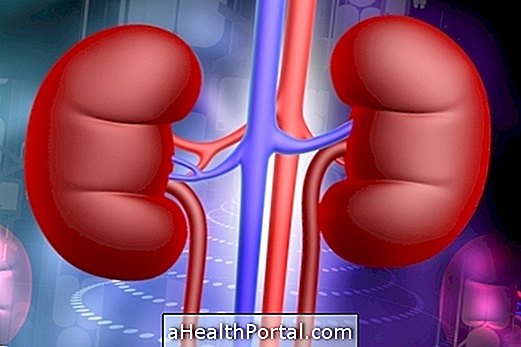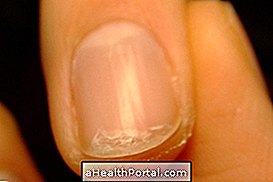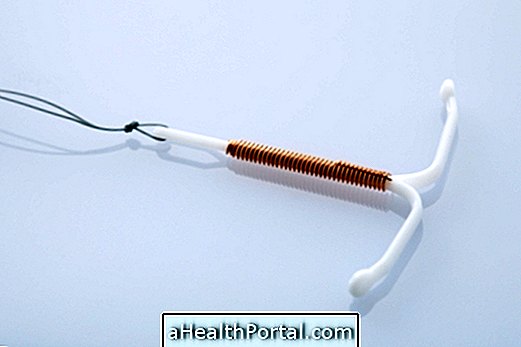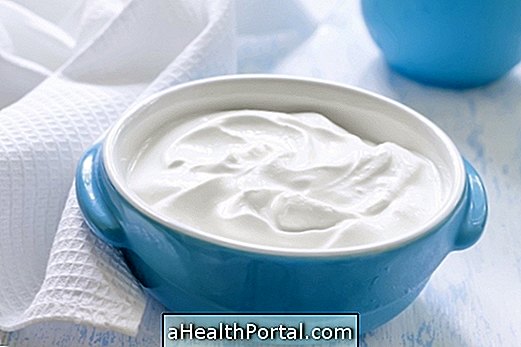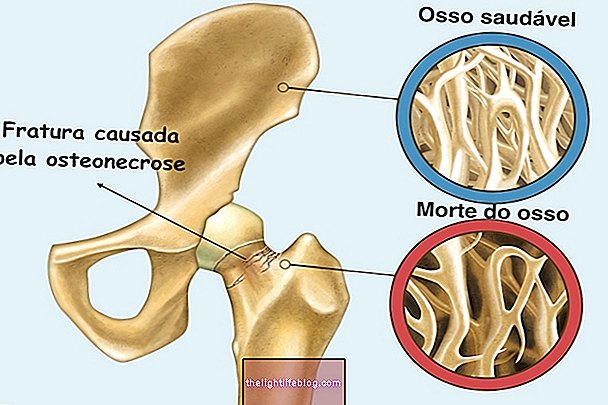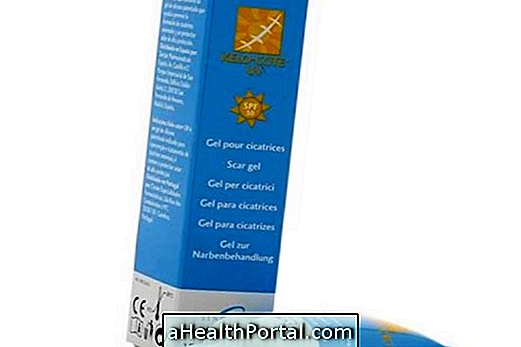Coughing occurs when there is excess mucus in the throat, which can be caused by the presence of inflammation in the throat or by an allergy, for example.
Generally, the sensation of something stuck in the throat caused by the throat is due to the irritation of the mucosa of the throat or the lack of fluidity of the mucus and, therefore, to eliminate this discomfort one must try to reduce this irritation or to hydrate the mucus more, so that it easily comes out with a cough and does not stick to the walls of the throat.
Some easy ways to do this are:
1. Gargle with salt and water

Gargling is very easy to do and helps relieve neck irritation because the salt helps draw more water into the throat walls, creating a barrier that in addition to moisturizing also protects against dust that can irritate the mucous membranes.
To make this gargle you should:
- Mix 1 tablespoon of salt in half a glass of warm water;
- Stir the water well until the salt dissolves completely;
- Put the mixture in the mouth and tilt the head back;
- Gargle with water for at least 30 sec;
- Repeat the gargling until all the water is gone.
This technique causes a rapid relief and therefore can be used whenever the discomfort is very intense, up to 3 to 4 times a day.
2. Passing essential eucalyptus oil on the chest

Eucalyptus essential oil is a natural way to release the mucus trapped in the throat and open the airways, as well as relieving irritation in the throat, improving the discomfort caused by the throat.
To use the essential oil one should mix 3 to 4 drops in one teaspoon of coconut oil and then rub the mixture in the chest. At first this technique may cause a slight coughing sensation, but over time the cough will reduce and relieving throat irritation.
3. Drink lemon tea with honey

The lemon has the ability to break down the mucus molecules, making it more liquid and easy to eliminate. Honey helps to create a protective layer of the throat that reduces mucosal irritation. That way, this tea is a great way to relieve the feeling of something stuck in the throat.
To take this home remedy one should mix 2 tablespoons of lemon juice in 1 cup of boiling water, add 1 teaspoon of honey, mix and drink as soon as they blend.
4. Spray with hot water

The nebulizations are great for moisturizing the mucosa of the throat but also for liking the throat tightness throat, allowing it to be eliminated more easily.
To do this it is recommended:
- Put 1 to 2 liters of boiling water in a bowl;
- Put a towel over the head, covering the basin too;
- Breathe the steam coming out of the bowl.
However, nebulization can also be done with a special apparatus, known as a nebulizer, in which the vapor is released directly into a face mask. In the water, a few drops of eucalyptus essential oil can be mixed to obtain the benefits of relieving irritation and even coughing if present.
Also check out 4 types of nebulizations that can be done to treat respiratory problems.
5. Drink 2 liters of water
Although it is the simplest tip, it is one of the most effective in relieving the throat throat sensation as it hydrates the secretions that are trapped, allowing them to be eliminated with the cough. This water can be drunk in the form of teas or even coconut water, for example.
If you find it difficult to drink water, here are some techniques to make it easier to drink water during the day:

Possible causes of throat clearing
Cigarette smoking is caused by excess mucus in the throat, which can happen due to throat irritation or allergy. Some of the most common causes include:
- Flu or cold;
- Allergy;
- Bronchitis;
- Inflammation of the larynx or pharynx;
- Sinusitis;
- Pneumonia.
Thus, if clearing does not improve after 3 days, it is important to go to the general practitioner, or pulmonologist, to identify if there is a problem that needs to be treated with specific medications.
Some signs that may indicate that the throat is being caused by another problem and that it is necessary to go to the hospital include yellowish or greenish phlegm, difficulty breathing, sore throat or low fever, for example.

